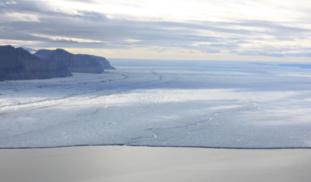Please wait...
About This Project
Greenland is melting and as more of its ice and water move into the ocean, sea level will rise. We will measure ocean temperature and salinity below 200 to 600 meter thick ice of Petermann Glacier in North Greenland for several years. Holes will be drilled through the ice to reach the ocean below where we place about 10 instruments. The holes will freeze over quickly, the instruments will never return, but a cable connects the mysteries of the dark ocean to the surface and via satellite to anyone with an internet connection. More details are posted at my web-log http://IcySeas.org where I share my excitement about science.

Browse Other Projects on Experiment
Related Projects
A biogeochemical profile of the seafloor
There is a huge gap in knowledge of deep seafloor habitats. Current methods of studying the deep seafloor...
Building a low-cost microplastic detection system for deployment in Mauritius
Millions of tons of plastics enter our ocean each year, eventually breaking down into microplastics (MPs...
Replacing Air Conditioners: Creating an Accessible Energy Efficient Device
3.6 billion people currently live in areas with extreme temperatures! This project explores innovative cooling...


